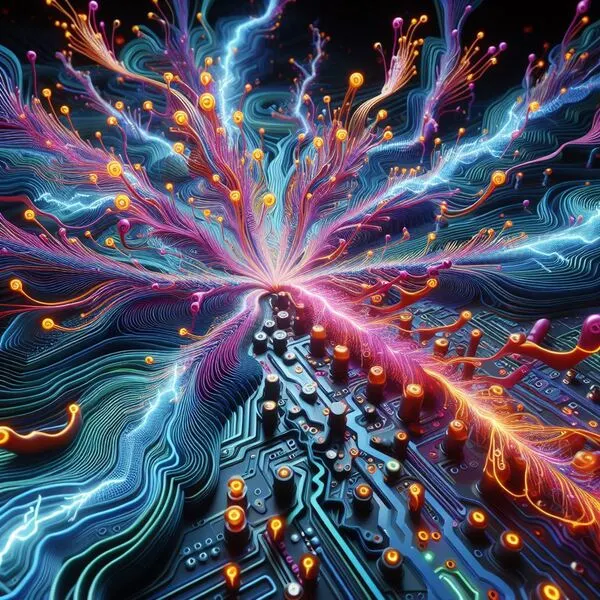Electricity: Illuminating Our World
Introduction
Electricity, a fundamental force in nature, is omnipresent in our daily lives, powering the modern conveniences that we often take for granted. From the lightning bolt that dazzles the sky to the hum of appliances in our homes, electricity is both mysterious and indispensable.
What is Electricity?
At its core, electricity is the flow of electric charge, with electrons carrying the charge. Understanding electric charge, whether positive or negative, is fundamental to grasping the essence of electricity. Electric current, the movement of electrons through a conductor, is measured in amperes, the basic unit of electricity.
What is the History of Electricity?
The history of electricity unfolds through centuries of scientific exploration and groundbreaking inventions. Visionaries like Benjamin Franklin, who experimented with lightning and electricity, Michael Faraday, the pioneer of electromagnetic induction, and Thomas Edison, the inventor of the practical electric light bulb, collectively shaped the landscape of electrical innovation.
whom is Benjamin Franklin?
Benjamin Franklin, a polymath of the 18th century, left an indelible mark on the understanding of electricity. His famous kite experiment, conducted in 1752, demonstrated the connection between lightning and electricity. By flying a kite in a storm and collecting charge in a Leyden jar, Franklin proved that lightning is a form of electrical discharge. This groundbreaking experiment paved the way for practical applications of electricity and lightning rods, protecting structures from destructive electrical strikes.
whom is Michael Faraday?
In the 19th century, Michael Faraday’s pioneering work laid the foundation for modern electrical technology. His experiments with electromagnetism and electromagnetic induction were revolutionary. Faraday discovered that a changing magnetic field induces an electric current, a principle essential for the operation of generators and transformers. His contributions set the stage for the development of electric power systems and the utilization of electricity in various applications.
whom is Thomas Edison?
Thomas Edison, often hailed as America’s greatest inventor, brought light to the world with his invention of the practical incandescent light bulb. In 1879, after numerous trials and iterations, Edison successfully produced a long-lasting, commercially viable light bulb. This innovation transformed the way we live, work, and illuminate our surroundings, replacing less efficient lighting methods of the time. Edison’s work extended beyond the light bulb, encompassing the creation of the first electrical power distribution system in New York City, marking the dawn of the electric age.

How Electricity Works?
Delving into the mechanics, electric potential difference, or voltage, propels the flow of electric current. The concept of circuits, with components such as conductors and insulators, forms the backbone of electrical systems. Distinctions between series and parallel circuits further illuminate the intricate nature of electricity.
What is the Electric Potential Difference?
Electric potential difference (V) is the measure of the electric potential energy per unit charge in an electrical circuit. In simpler terms, it represents the force that drives electric charges to move within a conductor. This force is analogous to the pressure in a water pipe that propels water to flow; in electricity, voltage drives the flow of electric current.
Understanding Circuits and Components?
To comprehend the fundamental principles of electricity, one must delve into the intricate world of circuits and their essential components.
What is Circuits ?
Circuit is a closed loop through which electricity can flow. It consists of various components that work together to facilitate the movement of electric charge. Understanding circuits is pivotal, as they form the foundation of all electrical systems.
What is Circuit Components?
In a circuit, various materials play distinct roles in facilitating or impeding the flow of electricity. The most crucial differentiation lies between conductors and insulators.
What Conductors are?
Conductors are materials that allow the easy flow of electric charge.
What Insulators are?
Insulators are materials that resist the flow of electric charge.
what are the Sources of Electricity?
Examining the sources of electricity generation unveils a diverse array of options. Fossil fuels like coal, oil, and natural gas, renewable sources such as solar, wind, hydroelectric, and geothermal, along with nuclear energy, contribute to our power grids. Analyzing the advantages and disadvantages of each source is crucial for informed decision-making.
| Source | Advantages | Disadvantages |
|---|---|---|
| Fossil Fuels | Widely available, established infrastructure | Greenhouse gas emissions, finite resources |
| Renewable | Clean energy, sustainable | Intermittency, initial costs |
| Nuclear | Low carbon footprint, high energy density | Radioactive waste, safety concerns |

what are the Uses of Electricity?
Electricity’s applications are vast and impactful, touching every aspect of our lives. From illuminating our homes and powering our appliances to driving technological advancements, electricity is the lifeblood of modern society.
- Lighting: Enabling illumination through bulbs and LEDs.
- Heating and Cooling: Powering HVAC systems for comfort.
- Appliances: Running household devices like electric dryers, refrigerators and smartphones.
- Communication: Facilitating global connectivity.
- Transportation: Driving electric vehicles towards sustainability.
- Medical Equipment: Powering life-saving devices like MRI machines.
- Industrial Processes: Fueling manufacturing and production.
what are the Future of Electricity?
As we look ahead, the future of electricity is marked by innovation and sustainability. Smart grids, renewable energy sources, and advancements in energy storage technologies signal a shift towards a cleaner and more efficient electrical landscape.

Conclusion
In conclusion, electricity is not merely a utility but a transformative force that has shaped and continues to shape our world. Embracing responsible and sustainable practices in electricity usage is imperative for a brighter and more sustainable future. Let us appreciate the marvels of electricity and strive for a harmonious coexistence with this powerful force.







